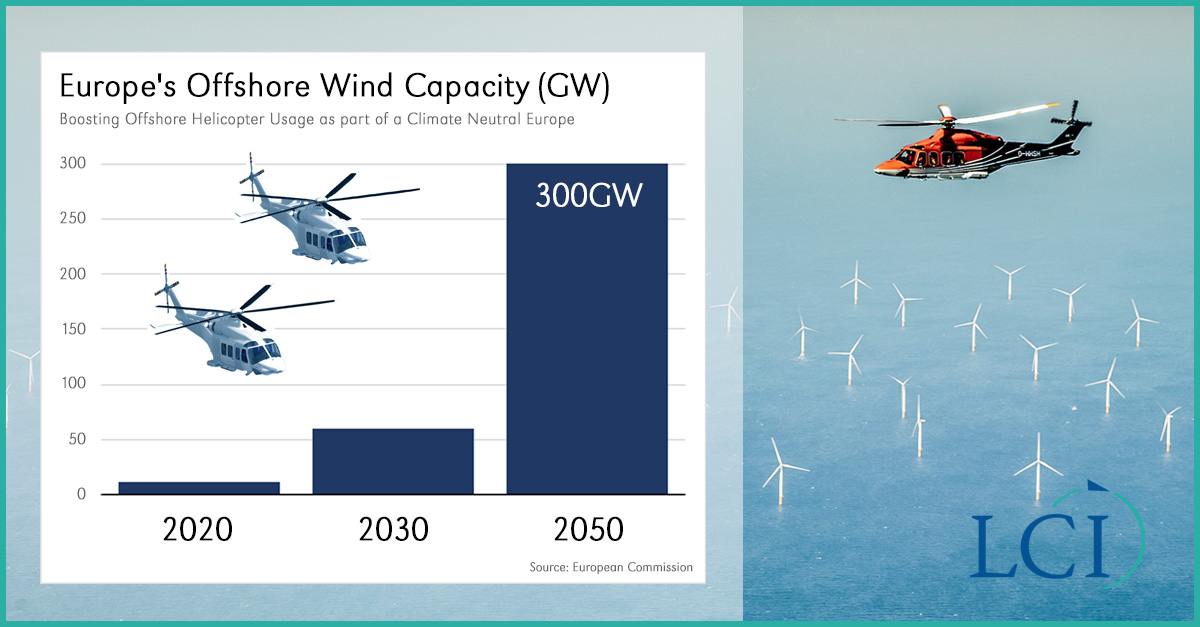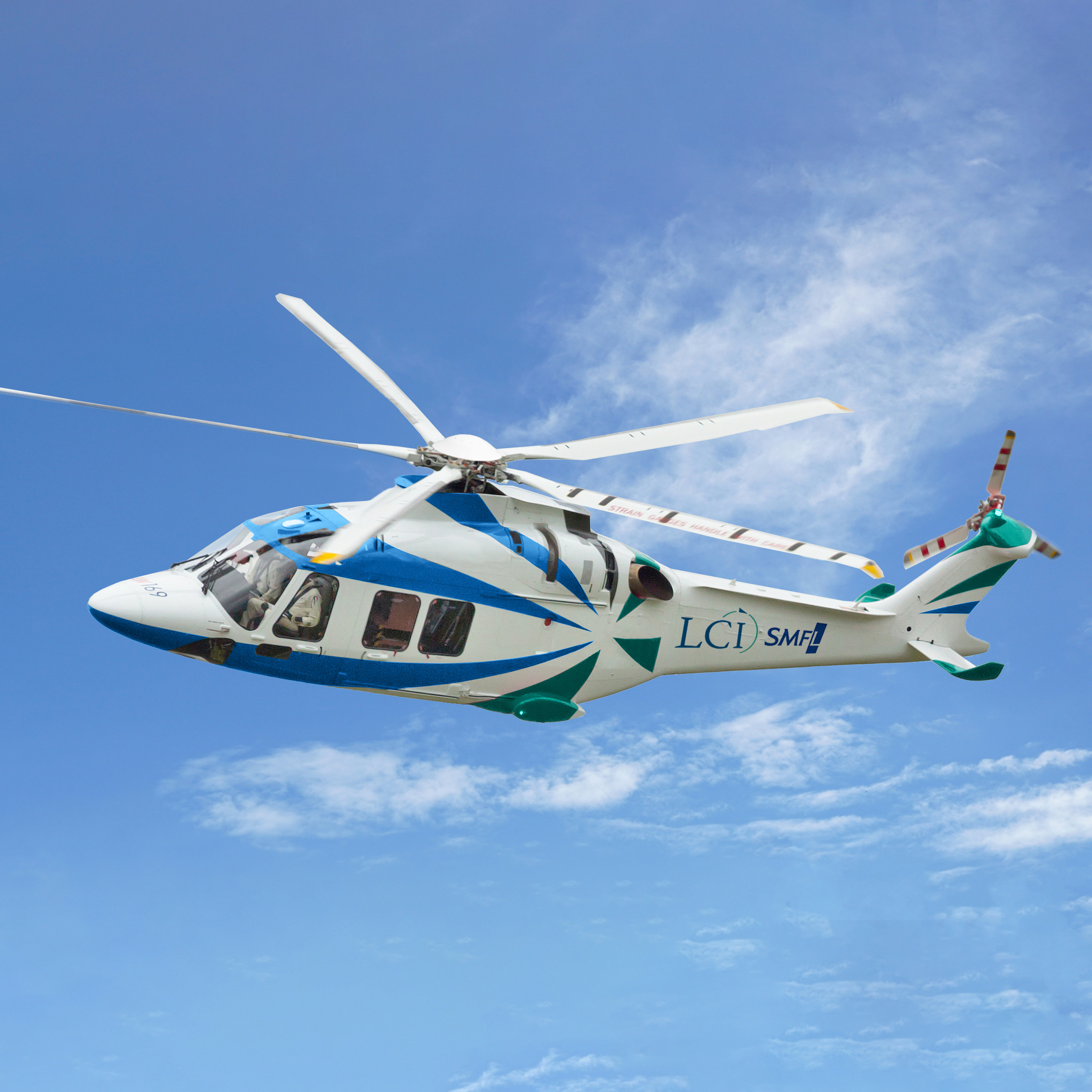Helicopters: energy for growth through climate change

The role of helicopters in national infrastructure in and tackling climate change is more and more important. Recently, the European Union (EU) announced plans to increase its offshore windfarm capacity by 25 times the current picture. Ambitious targets drawn up by the European Commission (EC) seek to increase the EU number already scattered around the Baltic, North Sea, Black Sea and Mediterranean. Libra group companies already have extensive experience in the energy sector, including in Greece and northern Europe, and LCI helicopters are deployed on a number of energy industry missions.
The EU hopes to see an enhanced output of 300 gigawatts (GW) by 2050, having climbed to 60 GW over the next decade alone. Current output in Europe (including UK facilities) stands at around 23 GW. A number of countries around the world, including the UK and EU member states, are also setting serious carbon reduction goals. The climate change battle, already high on the international agenda, requires serious commitment to make carbon emissions neutrality a reality.
The EC estimates that nearly €800 billion investment will be required between now and 2050 to meet its proposed objectives of a ‘climate-neutral Europe’. Analysis by the main helicopter OEMs correlates that as the potential for well in excess of a hundred incremental helicopters, based on existing trends. LCI is already very active in the offshore wind market and developing vital relationships with all stakeholders in the energy sector at this exciting time of rapid and exponential growth.
LCI’s fleet comprises approximately US$1 billion of assets in service, on order and under management, focused on the latest technology medium and super medium helicopters manufactured by leading helicopter OEMs including Leonardo, Airbus and Sikorsky.
These are deployed globally across four continents in multiple sectors including emergency medical services, offshore wind, search and rescue, maritime pilot transfer and oil-and-gas transportation.


 LCI appoints new CEO, Jaspal Jandu
LCI appoints new CEO, Jaspal Jandu  LCI and Sumitomo Mitsui agree $230m joint venture
LCI and Sumitomo Mitsui agree $230m joint venture  Airbus: the versatility of helicopters
Airbus: the versatility of helicopters